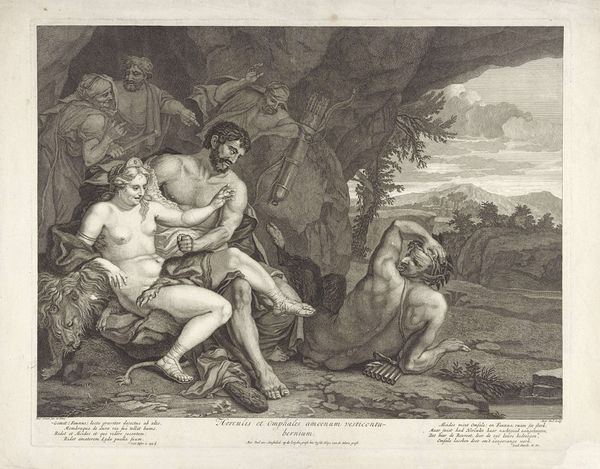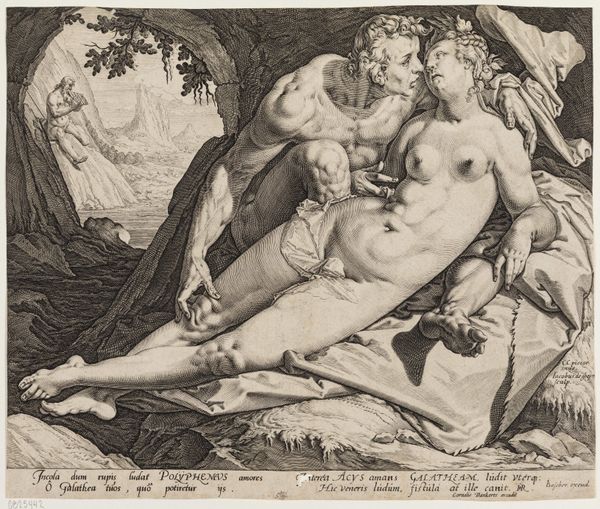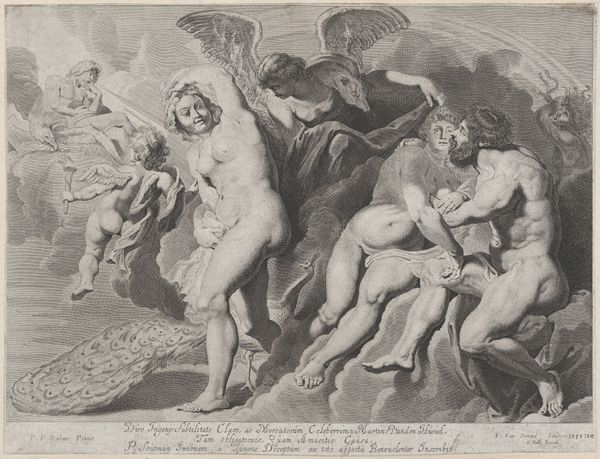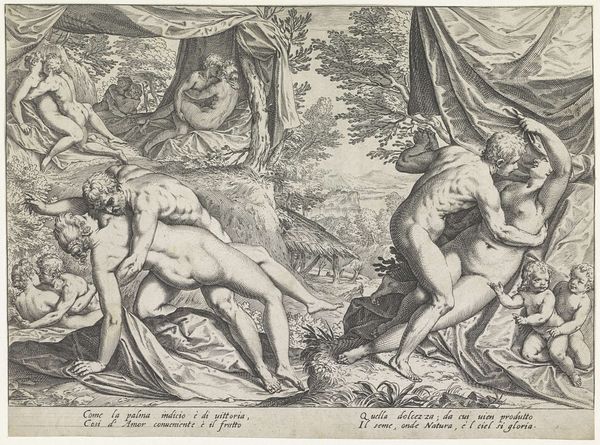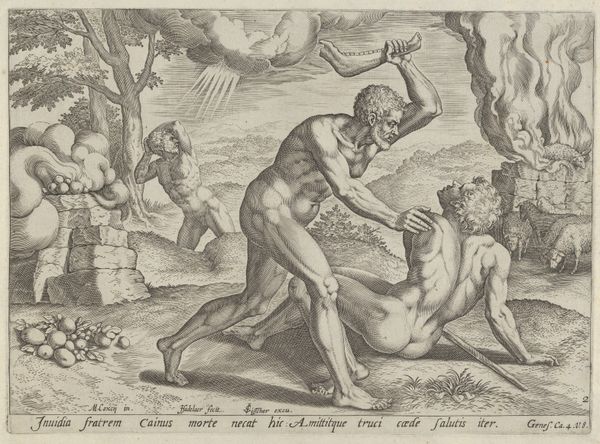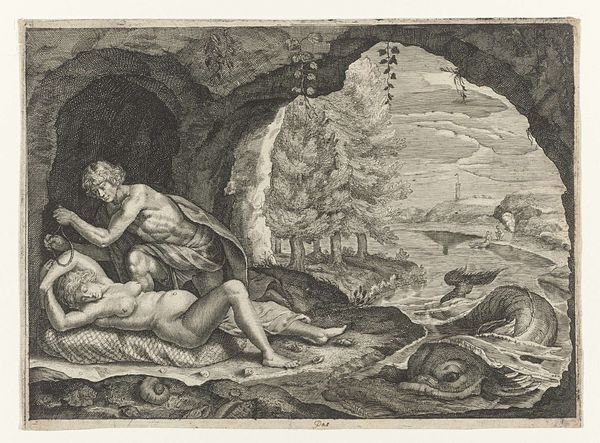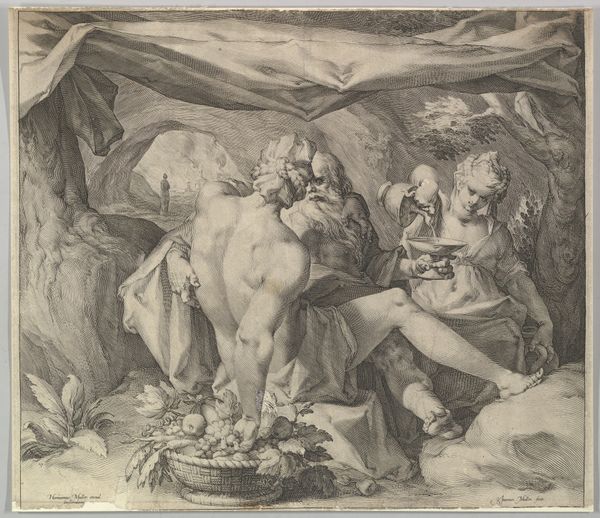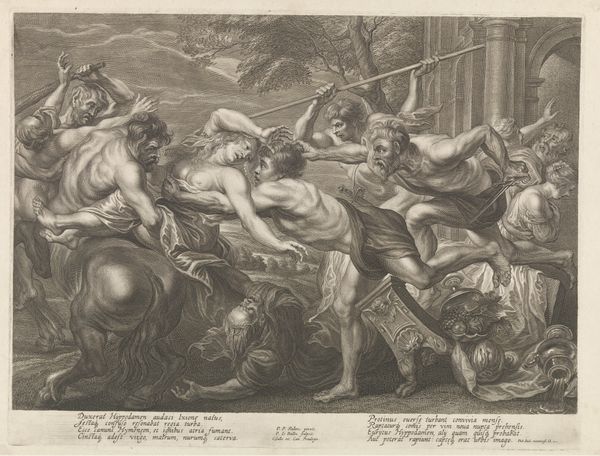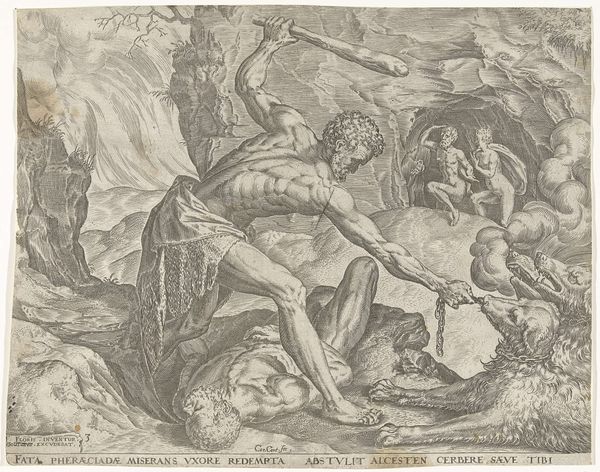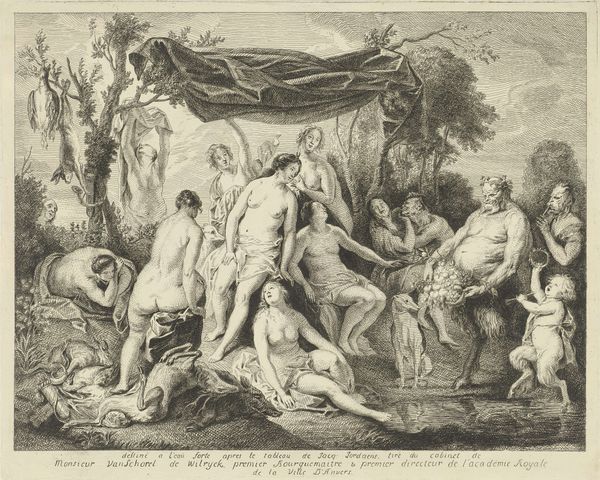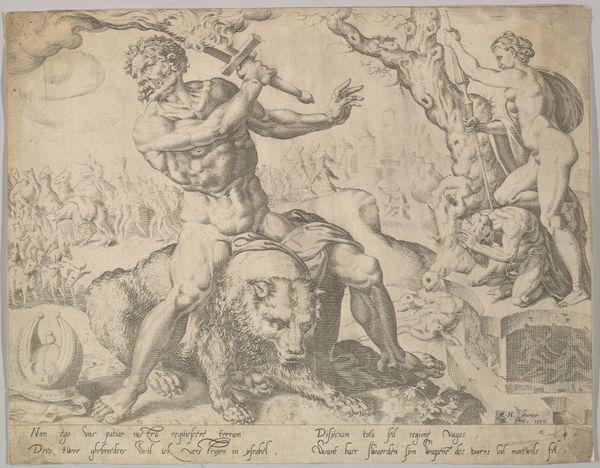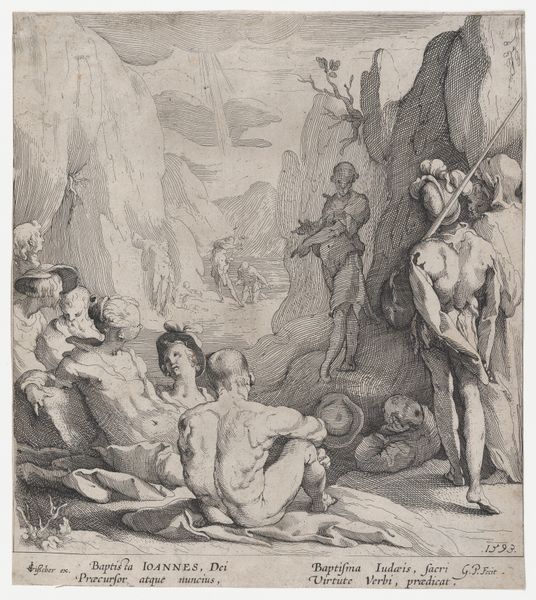
Plate 6: Ulysses driving a burning stake into Polyphemus' eye 1756
0:00
0:00
drawing, print, etching, engraving
#
pencil drawn
#
drawing
#
narrative-art
#
baroque
# print
#
etching
#
charcoal drawing
#
figuration
#
pencil drawing
#
history-painting
#
nude
#
engraving
Dimensions: Sheet (Trimmed): 11 1/4 × 14 7/16 in. (28.5 × 36.7 cm)
Copyright: Public Domain
Editor: This is Bartolomeo Crivellari’s "Plate 6: Ulysses driving a burning stake into Polyphemus' eye," an etching from 1756. The scene is incredibly dramatic. I'm struck by the brutality of the moment captured; the vulnerability of Polyphemus is really intense. What social narratives do you see at play in this work? Curator: It's crucial to view this through the lens of power dynamics. Consider the story itself: Ulysses, a symbol of cunning intelligence and Greek "civilization," against Polyphemus, the monstrous, solitary Cyclops. The engraving visualizes a perceived triumph of intellect over brute strength, but it also reflects anxieties around "otherness" and disability. Polyphemus’ blindness becomes a symbol of his vulnerability and supposed inferiority, reinforcing societal biases. What does it say about who is considered human and who is demonized as "monster"? Editor: That makes me think about the context in which Crivellari was working. Were these biases widely accepted, or were there dissenting voices? Curator: Dominant narratives often went unchallenged in 18th-century Europe. Enlightenment ideals frequently excluded those deemed "uncivilized" or "deviant," perpetuating hierarchies rooted in race, class, gender, and ability. Ulysses embodies the "ideal" European man, while Polyphemus becomes a scapegoat for fears surrounding those who don’t conform. Editor: It's troubling to realize how art can reinforce problematic ideologies. I will also try to challenge my assumptions when viewing artwork, thank you! Curator: Exactly, recognizing these dynamics is the first step to critically engaging with art history. Now, we can see such artworks through a fresh understanding about historical power.
Comments
No comments
Be the first to comment and join the conversation on the ultimate creative platform.

